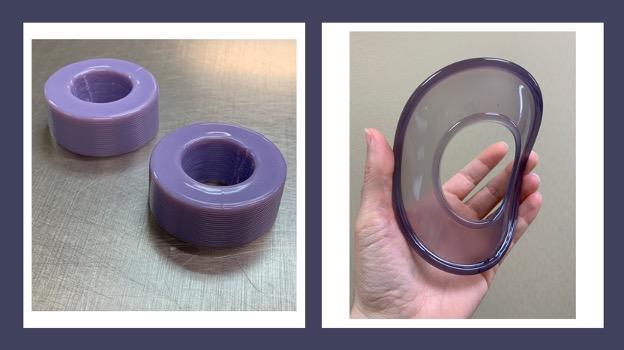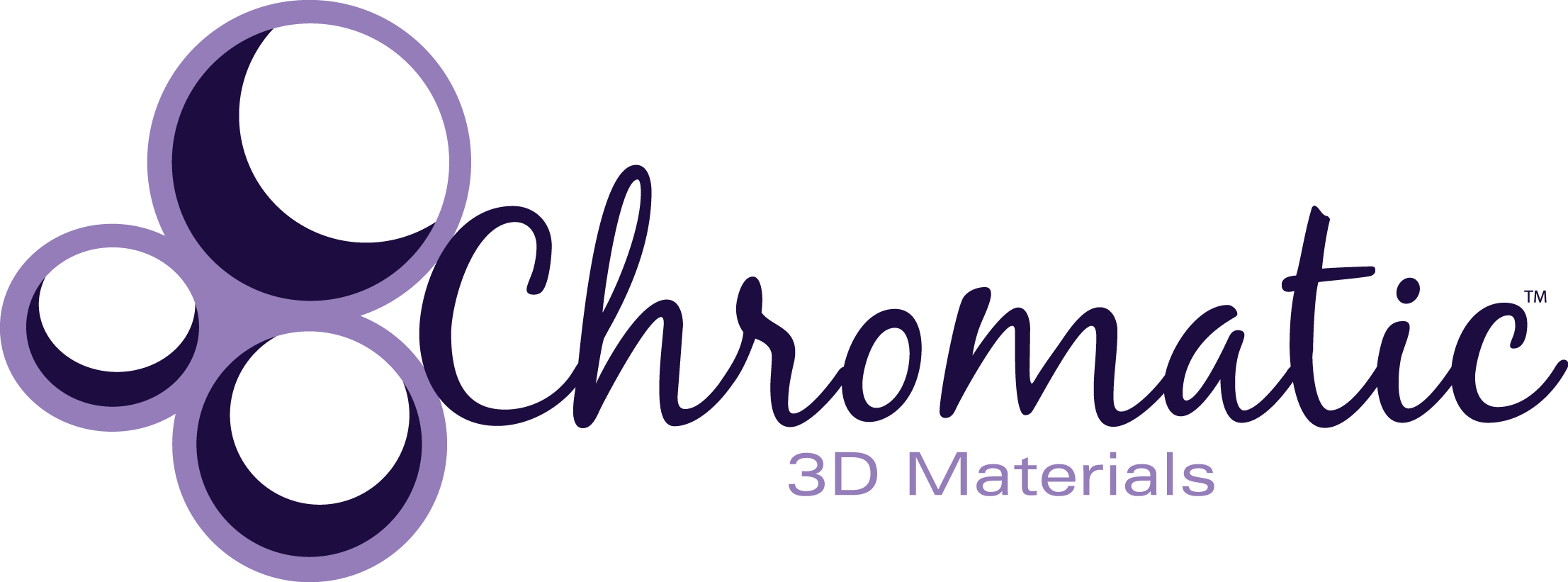Minnesota-based 3D printing technology and materials startup Chromatic 3D Materials has secured $5 million in a new funding round led by Embedded Ventures, a new venture capital firm investing in space startups that seek commercial relationships with both the private sector and the federal government. The 3D business is widely known for rubbery, elastic-plastic material formulas combined to form printable, flexible plastics with a broad hardness range suitable for markets that demand customized products, such as healthcare, sports and footwear, space, and defense.
Chromatic will use the proceeds to fuel its growth and bolster the commercialization of its proprietary 3D printing technology, enabling the transition from early tech development to solid production-grade parts manufacturer. Furthermore, the funds will help finance and continue to scale the technology as the organization expects to double its headcount by 2023.
As one of the key backers in this investment, Embedded Ventures’ co-founder Jordan Noone has a strong history with the space industry and 3D printing technologies since he was one of the brilliant minds behind 3D printing rocket startup Relativity Space–most recently valued at $4.2 billion. In 2020, Noone met former tech recruiter and venture capitalist Jenna Bryant and together created the Los Angeles deep tech venture capital fund. The firm will play an essential role in Chromatic’s future, not only for the finance team but also as a member of the board of directors, helping propel Chromatic’s technology into a successful business.
The round, which marks Embedded Ventures’ third investment since being founded in 2020, also saw participation from Golden Seeds, an early-stage investment firm focused on women-led businesses, and Swiss investment managers at Oyat Invest, who also led Chromatic’s previous financing.

Embedded Ventures and Relativity Space co-founder Jordan Noone. Image courtesy of Jordan Noone.
Founded in 2016 by materials industry veteran Cora Leibig, the startup offers high durability and functional 3D printed elastomers used for creating structures in a wide range of industries, particularly where metal parts are joined. Five years ago, Liebig realized that many materials crucial to medicine, defense, automotive and industrial markets were not viable for 3D printing. So she set out to build a company that would deliver the materials, software, and printers required to make durable, functional, and flexible elastomers. Strategically, Chromatic develops and sells its flagship material but also partners with 3D printer manufacturers to determine the appropriate parameters required to print with the material.
Commenting on the company’s journey since inception, Leibig told 3DPrint.com that she realized many customers have already tried SLA, inkjet, or FDM elastomers and found those technologies’ durability or geometric limitations inadequate for truly functional part designs. With this knowledge, Liebig is set on making advances in printing resolution and printing methods to address this ever-increasing market needs and develop printable polyurethane elastomers with a broad range of flexibilities.
With Chromatic’s material, printing speeds can be between five and ten times faster than filament printing, suggests Leibig. That is because the adaptability, durability, and resilience of these materials are unmatched by the thermoplastics used in conventional 3D printing processes. Thermoset chemistry is a rare art, and few people in the world know how to adapt the materials to meet the needs of 3D printing processes, but now Leibig and her team are creating the durable materials needed to lead game-changing disruption in the 3D printing industry.
Most importantly, she believes that the team needs to focus on where Chromatic’s technology has the most advantages, and that is “where material durability is an entry-ticket requirement.” This includes applications where printing on various surfaces (such as textile, metal, or plastic) offers design and production advantages; large part printing; multi-material printing, and solid, non-porous part printing.
Leibig said her company’s ultimate vision is to develop 3D printable grades of thermoset materials pervasive in the plastics industry. These materials–including polyurethanes, epoxies, and silicones–comprise more than 20% of the plastics production for conventional processes and are used wherever high mechanical, thermal, or chemical durability are required.
“The key to our technology is altering the starting materials for thermosets, so they have the flow and reactivity necessary to perform well in a reactive 3D printing deposition process, similar to FDM. The result has many advantages over FDM, ranging from part durability to material versatility to printing speed and multi-material printing. In addition to high part durability, the parts are isotropic and solid with no pores, with chemical bonding throughout. This is important when sealing applications,” remarked Leibig.
In the defense sector, Chromatic has printed parts for battlefield applications, such as drones or robots, especially where damaged parts can be directly printed or replaced in the field for reuse. What’s more, the company has demonstrated that its components are “suitable for functional spare parts in industrial equipment,” and Liebig believes they will have utility for the on-demand production of military spare parts as well.
As a material supplier to the US government, Chromatic “collaborates to innovate,” as Leibig describes. For example, the startup was awarded Phase I and II Small Business Innovation Research (SBIR) grants from the National Science Foundation in 2017 and 2019, respectively, to create a novel set of elastomers for additive manufacturing technologies. The result was a rubbery, elastic material with unparalleled durability, which Chromatic later commercialized as FlexTune.
Thanks to Series A funding in 2018, Chromatic built the technology concept further, developing printing methods and control systems essential for printing quality and enhanced printing speed. It also got started with several important commercial relationships, particularly in Germany, where the startup has its second headquarters and where it has been actively developing applications in the defense, rail, and industrial equipment sectors.
One of the largest verticals for Chromatic is undoubtedly the space industry. Given the nature of the material and the fact that the printed material chemically bonds to surrounding substrates, it would be especially advantageous for in-space manufacturing, one of the ultimate aspirations for the technology. In the meantime, the startup has joined forces with other companies and government agencies to 3D print elastomers in rocket propulsion systems. Aside from space, Chromatic is also targeting the industrial, transportation, and textile sectors, where there is high demand for replacement parts, and the materials have proven durability for such demanding applications.
Subscribe to Our Email Newsletter
Stay up-to-date on all the latest news from the 3D printing industry and receive information and offers from third party vendors.
Print Services
Upload your 3D Models and get them printed quickly and efficiently.
You May Also Like
3D Printing News Briefs, July 2, 2025: Copper Alloys, Defense Manufacturing, & More
We’re starting off with metals in today’s 3D Printing News Briefs, as Farsoon has unveiled a large-scale AM solution for copper alloys, and Meltio used its wire-laser metal solution to...
3DPOD 260: John Hart on VulcanForms, MIT, Desktop Metal and More
John Hart is a Professor at MIT; he´s also the director of the Laboratory for Manufacturing and Productivity as well as the director of the Center for Advanced Production Technologies....
3D Printing News Briefs, June 28, 2025: Defense Accelerator, Surgical Models, & More
In this weekend’s 3D Printing News Briefs, 3YOURMIND was selected to join an EU Defense Accelerator, and PTC has announced model-based definition (MBD) capabilities within Onshape. Finally, a study out...
EOS in India: AM’s Rising Star
EOS is doubling down on India. With a growing base of aerospace startups, new government policies, and a massive engineering workforce, India is quickly becoming one of the most important...




































